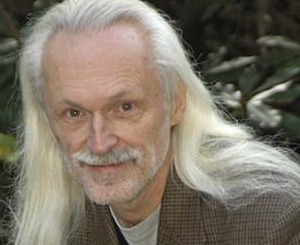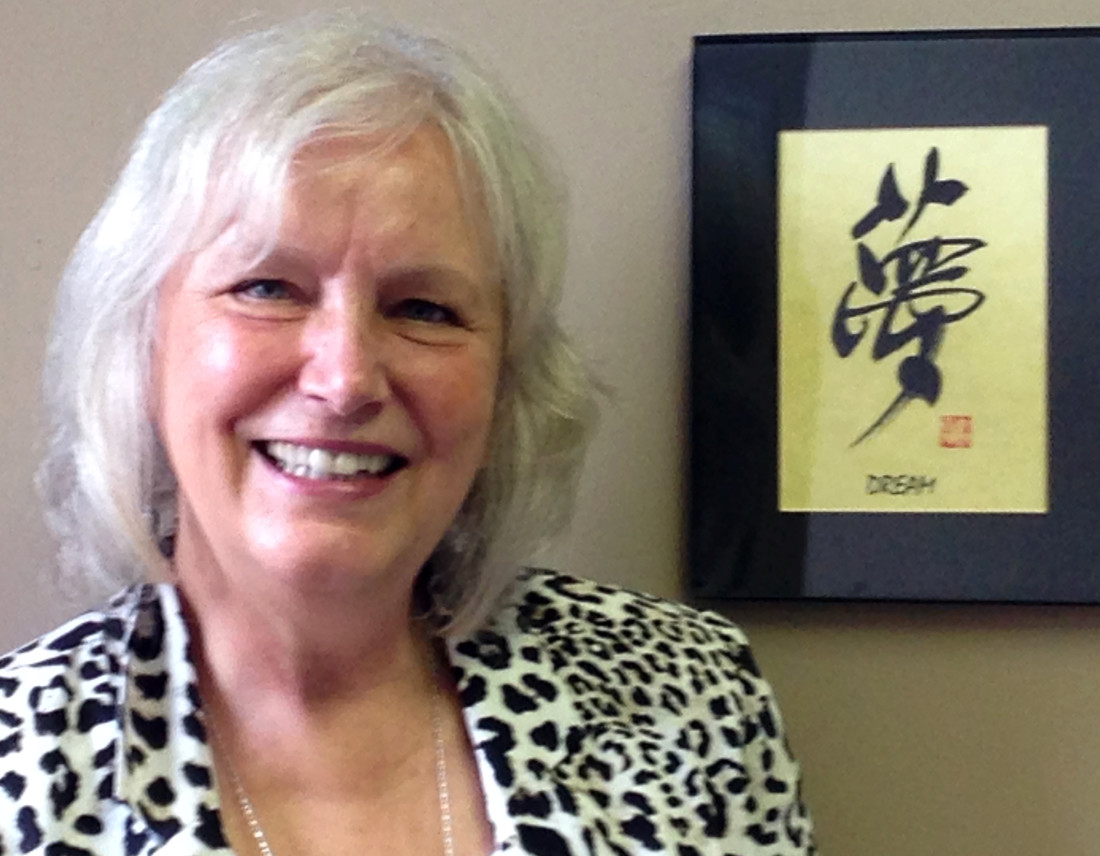Computer scientists might compare dreaming to a machine dumping data as it clears space in the hard drive’s memory. Neuroscientists might consider dreams as changes in brain activity: neurons firing, neurotransmitters circulating.
Two Asheville dream-study guides go beyond bytes and biochemicals, delving into dreams as messages linking the unconscious with the conscious.
When Tayria Ward speaks of dreams, it’s as if she’s describing an inviting home with spacious rooms, secret closets and hidden passageways ready to explore. If a frightening event occurs or a troubling image appears, it’s a timely, helpful message, she says.
“The dream is always on your side,” says Ward.
With a doctorate in depth psychology, she draws on the work of pioneering psychologist Carl Jung. Dreams, says Ward, are “the language of the unconscious trying to get through to our rational mind.”

As Robert Gongloff speaks of the dream world, glints of mischief alight in his eyes. “When we go into the dream state,” he says, “we are not bound by limitations of space, time, prejudice or fear.”
In his workshops, Gongloff provides participants with a detailed map of the dreamscape, enabling them to tour the territory and its landmark patterns.
Recently president and currently board chair of the International Association for the Study of Dreams, he considers dreams to be a kind of superreality. Applying Jung’s metaphor, Gongloff likens waking consciousness to the tip of an iceberg visible above water and the subconscious to the massive volume of ice below. Surrounding us, says Gongloff, like the water encompassing the ice, is the collective unconscious.
In dreams, he says, “the knowledge of the subconscious and the collective unconscious is available to us. Dreams attempt to reveal these realities to our consciousness.”
“Dreams always tell us what we don’t know about ourselves and what we need to know now,” says Ward. Their messages, she explains, pertain to the well-being of body and mind, soul and spirit.
She adds that, through dream study, “some people have experienced enormous psychological healings. An issue like lingering resentment toward someone can be laid to rest because you’ve dreamed about it and then you’ve worked with the dream. The potency of how it’s hurt or haunted you is resolved when your conscious mind gets the message.”
Gongloff considers a group of five to seven people ideal for dream study, which, he emphasizes, is not psychotherapy or a substitute for it.
In such groups, participants begin by describing their dreams. Fellow participants then pose questions, but they don’t interpret the dreamer’s experience.
“The phrase I like to use is ‘In my version of the dream …’ If you’re telling me your dream right now, at this moment I’m having my own dream,” says Gongloff. “I’m hearing what you’re saying, but I’m having my own version of it. My car looks different from your car, the animals I’m seeing are different from yours, the colors are different. I have my own perception based on my emotions, my history. So I can only say what my version of the dream is, what it means to me.”
Participants in Ward’s weekly groups consider at least two dreams during each two-hour session. “I encourage people to work with their dreams on their own,” she says. “But in a group, people help the dreamer by asking questions, making observations. Hosting the dream in a safe space and bringing all these different minds to the dream brings its message alive.”
She describes her own experience: “I’ve had dreams that I just had no clue about until I brought them to my dream group. As the group worked through such a dream with me, the dream became a life-changing event.”
Messages in code
Dreams deliver their messages through character, action, story, sound, color, image and wordplay, says Ward. “Dreams are great punsters.”
For instance: “A man was considering developing a relationship with a certain woman. For practical reasons, it was unlikely he’d ever be able to be with her. One night, he dreamed that they went into a pipe store together; he looked over all the different pipes.
“Later, as we talked about it [in session], he used the term ‘pipe dream.’ The dream seemed to say what ultimately became clear to him — that the idea of being with this woman was a pipe dream.”
Dreams can also point to physical healing. “We dream about our physical body, our physical condition, as part of the dream,” says Gongloff. “Look at the condition of the buildings that you’re in, in your dream. Their condition might reflect what’s going on in your physical body.”
“Any ailment can easily show up in dreams,” says Ward, citing the case of a man who dreamed that something was wrong with the leg of a piano. Upon hearing the dream, his study guide suggested it might indicate that something was amiss with his spinal column. During a subsequent spinal exam, the man learned he needed immediate medical treatment.
“Dreams are always giving us images and symbols for what’s going on in the body,” Ward says, “although they’re not necessarily literal. Say you dream you have cancer. It’s good to check that out with a physical exam. But don’t be frightened. Often the dream’s speaking at a symbolic level. Maybe some attitude is cancerous for you. It’s best to investigate dreams at all the different levels.”
Gongloff notes that dreams deal with the most important issues we are facing or denying — or are shielded from — in our waking lives. Although dreams do not always provide answers, he says, they often indicate the next questions to ask. “It’s the questions that drive us,” he says. “It’s the questions that keep the adventure going.”
Rather than parsing dream images as symbols, Gongloff focuses on action and character, identifying the dream’s structure, its theme. “Avoid using words from the dream itself as you retell it,” he advises.
Accordingly, a dream in which a bear walks into my campsite and, still in my sleeping bag, I try to run away becomes an intruder arrives and, fearing for my life, I have a hard time escaping.
“If you look at dreams from the standpoint of their themes,” says Gongloff, “you can ask, ‘Where in my waking life is this theme presenting?'”
Dreams in real time
Both Ward and Gongloff believe there’s little separation between dreaming and waking worlds. They recognize the human capacity for entering the multidimensional consciousness that unites the two — as realized through modalities ranging from ancient shamanic practice to contemporary transpersonal psychology.
In individual and group sessions, Gongloff and Ward encourage clients and students to honor the messages that their nighttime dreams convey by taking relevant, vitalizing action in the light of day. If Ward dreams during the night that she’s performing a ritual by a tree, for example, she performs some kind of ritual by a tree during waking hours soon after.
“I believe in dreams the way aboriginals speak of dreams,” says Ward, who has studied with shamans from several continents. “Our dreaming psyche takes part in the collective field of consciousness. It’s always active. When we’re awake, we’re less aware of it. But dreaming is taking place at all times.”
Realistically, are dreams portals to “the collective field of consciousness?”
Scientists including Albert Einstein, Niels Bohr, August Kekulé and Frederick Banting have received the guidance they’ve needed to make their breakthrough discoveries in fields such as physics, chemistry and medicine through those very portals.
Still, perhaps dreams are only the product of brain activity — neurons firing and neurotransmitters circulating.
Where did Otto Loewi — the pharmacologist who demonstrated that nerve impulses travel by chemical, not electrical, connections — get the idea for the Nobel Prize-winning experiment he used to prove the function of neurotransmitters?
In a dream.
More Info
Tayria Ward, Ph.D.
tayriaward.com
Robert Gongloff, M.A.
heartofthedream.com



Before you comment
The comments section is here to provide a platform for civil dialogue on the issues we face together as a local community. Xpress is committed to offering this platform for all voices, but when the tone of the discussion gets nasty or strays off topic, we believe many people choose not to participate. Xpress editors are determined to moderate comments to ensure a constructive interchange is maintained. All comments judged not to be in keeping with the spirit of civil discourse will be removed and repeat violators will be banned. See here for our terms of service. Thank you for being part of this effort to promote respectful discussion.